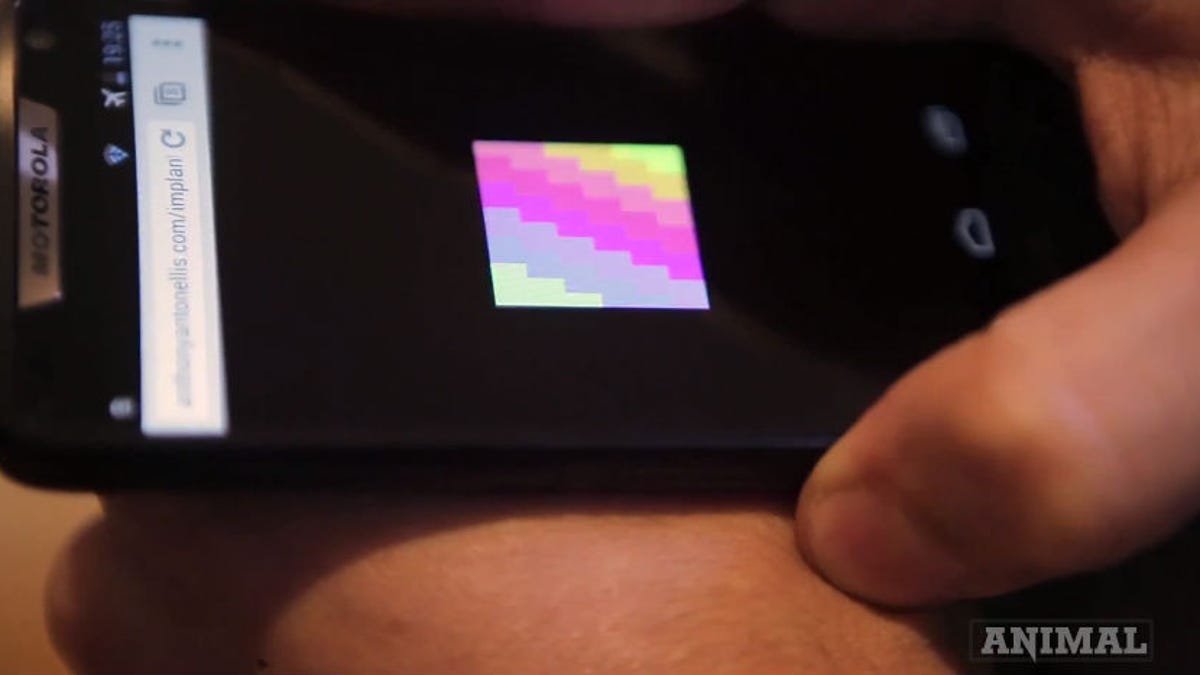Artist's chip implant sends animated GIFs to his phone
By implanting an RFID chip the size of a grain of sand into his hand, artist Anthony Antonellis can send 1KB images directly to his Android smartphone.

While everyday Web users can load information onto a smartphone using a QR code, artist Anthony Antonellis simply holds his phone within 1 to 2 centimeters of his hand. Thanks to a tiny chip underneath his skin, Antonellis has created the world's first Net art implant.
"It's 1 to 2KB of storage, and I'm using that to store an animated GIF," he told the New York-based culture Web site Animal. "It works with mobile phones and card readers, and it's usually used for privacy, and I'm using it for a public purpose, which is to distribute artwork."
Antonellis used a radio frequency identification, or RFID, chip the size of a grain of sand and had it implanted via a tiny incision opened up between his thumb and index finger with a 0.75-inch blade. The chip was encased in a tiny piece of glass, and its antenna can pick up signals through his skin roughly 1 to 2 centimeters away.
He can even upload new artwork to the chip, which can store JPEGs, GIFs, ASCII art, MIDI files, and favicons. Right now, it's holding a rainbow-styled animated GIF that has 10 frames and 6 colors, equal to the roughly 1KB cap of the RFID chip.
"I'm going to have artists create different work to be on here, so it will be kind of a digital Net art tattoo," Antonellis said, debunking the phrase "the smallest art gallery in the world" because it only transfers the information instead of letting the human body actually display it. He's currently developing an Android app, and possibly one for iOS, to pair with his RFID chip.
The New York-based artist has a history of experimenting with unique ways to store and display art. For instance, his Credit Card Curation project features the Internet art of many of the artists on Antonellis' online gallery NetArtNet.net on the front of specially ordered credit cards. "I like the idea of micro-curation," he said.
As for whether or not the process of implanting a chip beneath his skin hurt in the slightest, Antonellis explained that it only hurt when he acknowledged what was actually happening, like when he peeked at the stitching process. Otherwise, "I 'Eternal Sunshine'd' that entire hour of my life," he added.
Read the full account of Antonellis' self-experimentation here on Animal, and check out the moderately graphic video below of the artist getting the implant put in by a Brooklyn, N.Y., body modification specialist.

